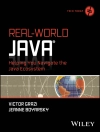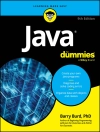Learn from state-of-the-art examples in robotics, motors, detection filters, chemical processes, aircraft, and spacecraft. With this book you will review contemporary MATLAB coding including the latest MATLAB language features and use MATLAB as a software development environment including code organization, GUI development, and algorithm design and testing.
Features now covered include the new graph and digraph classes for charts and networks; interactive documents that combine text, code, and output; a new development environment for building apps; locally defined functions in scripts; automatic expansion of dimensions; tall arrays for big data; the new string type; new functions to encode/decode JSON; handling non-English languages; the new class architecture; the Mocking framework; an engine API for Java; the cloud-based MATLAB desktop; the memoize function; and heatmap charts.
MATLAB Recipes: A Problem-Solution Approach, Second Edition provides practical, hands-on code snippets and guidance for using MATLAB to build a body of code you can turn to time and again for solving technical problems in your work. Develop algorithms, test them, visualize the results, and pass the code along to others to create a functional code base for your firm.
What You Will Learn
- Get up to date with the latest MATLAB up to and including MATLAB 2020b
- Code in MATLAB
- Write applications in MATLAB
- Build your own toolbox of MATLAB code to increase your efficiency and effectiveness
Who This Book Is For
Engineers, data scientists, and students wanting a book rich in examples using MATLAB.
Mục lục
Part I: Coding in MATLAB.- 1: Coding Handbook.- 2: MATLAB Style.- 3: Visualization.- 4: Interactive Graphics.- 5: Testing and Debugging.- 6: Classes.- Part II: Applications.- 7: The Double Integrator.- 8: Robotics.- 9: Electric Motors.- 10: Fault Detection.- 11: Chemical Processes.- 12: Aircraft.- 13: Spacecraft Attitude Control.- 14: Automobiles.
Giới thiệu về tác giả
Michael Paluszek is the co-author of MATLAB Recipes published by Apress. He is President of Princeton Satellite Systems, Inc. (PSS) in Plainsboro, New Jersey. Mr. Paluszek founded PSS in 1992 to provide aerospace consulting services. He used MATLAB to develop the control system and simulation for the Indostar-1 geosynschronous communications satellite, resulting in the launch of PSS’s first commercial MATLAB toolbox, the Spacecraft Control Toolbox, in 1995. Since then he has developed toolboxes and software packages for aircraft, submarines, robotics, and fusion propulsion, resulting in PSS’s current extensive product line. He is currently leading a US Army research contract for precision attitude control of small satellites and working with the Princeton Plasma Physics Laboratory on a compact nuclear fusion reactor for energy generation and propulsion.
Prior to founding PSS, Mr. Paluszek was an engineer at GE Astro Space in East Windsor, NJ. At GE he designed the Global Geospace Science Polar despun platform control system and led the design of the GPS IIR attitude control system, the Inmarsat-3 attitude control systems and the Mars Observer delta-V control system, leveraging MATLAB for control design. Mr. Paluszek also worked on the attitude determination system for the DMSP meteorological satellites. Mr. Paluszek flew communication satellites on over twelve satellite launches, including the GSTAR III recovery, the first transfer of a satellite to an operational orbit using electric thrusters. At Draper Laboratory Mr. Paluszek worked on the Space Shuttle, space station and submarine navigation. His space station work included designing of control moment gyro based control systems for attitude control. Mr. Paluszek received his bachelors in electrical engineering, and master’s and engineer’s degrees in aeronautics and astronautics from the Massachusetts Institute of Technology. He is author of numerous papers and has over a dozen US patents.
Stephanie Thomas is the co-author of MATLAB Recipes, published by Apress. She received her bachelor’s and master’s degrees in aeronautics and astronautics from the Massachusetts Institute of Technology in 1999 and 2001. Ms. Thomas was introduced to PSS’s Spacecraft Control Toolbox for MATLAB during a summer internship in 1996 and has been using MATLAB for aerospace analysis ever since. She built a simulation of a lunar transfer vehicle in C++, Lunar Pilot, during the same internship. In her nearly 20 years of MATLAB experience, she has developed many software tools including the Solar Sail Module for the Spacecraft Control Toolbox; a proximity satellite operations toolbox for the US Air Force; collision monitoring Simulink blocks for the Prisma satellite mission; and launch vehicle analysis tools in MATLAB and Java, to name a few. She has developed novel methods for space situation assessment such as a numeric approach to assessing the general rendezvous problem between any two satellites implemented in both MATLAB and C++. Ms. Thomas has contributed to PSS’s Attitude and Orbit Control textbook, featuring examples using the Spacecraft Control Toolbox, and written many software user guides. She has conducted SCT training for engineers from diverse locales such as Australia, Canada, Brazil, and Thailand and has performed MATLAB consulting for NASA, the US Air Force, and the European Space Agency.












